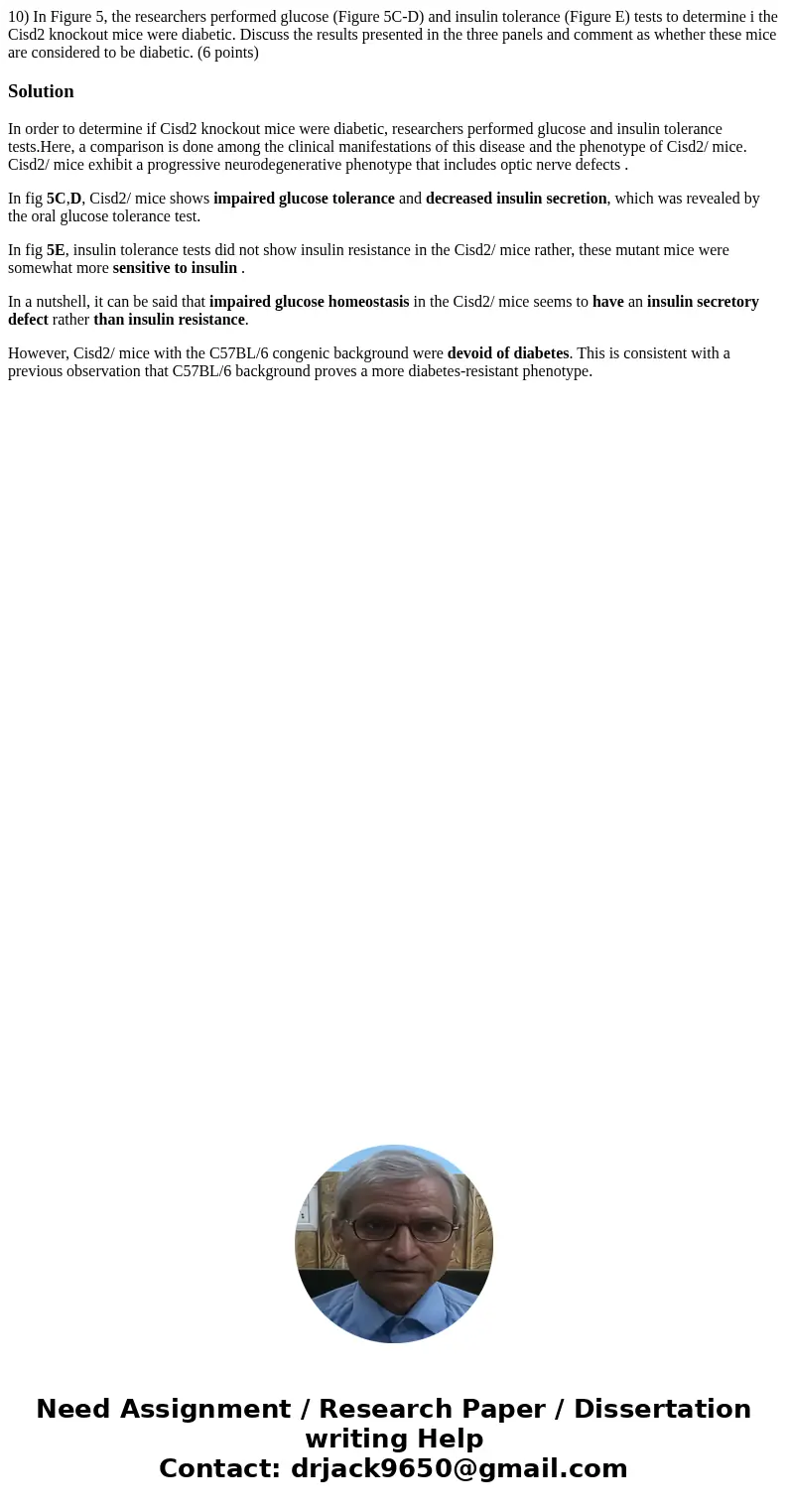10 In Figure 5 the researchers performed glucose Figure 5CD
Solution
In order to determine if Cisd2 knockout mice were diabetic, researchers performed glucose and insulin tolerance tests.Here, a comparison is done among the clinical manifestations of this disease and the phenotype of Cisd2/ mice. Cisd2/ mice exhibit a progressive neurodegenerative phenotype that includes optic nerve defects .
In fig 5C,D, Cisd2/ mice shows impaired glucose tolerance and decreased insulin secretion, which was revealed by the oral glucose tolerance test.
In fig 5E, insulin tolerance tests did not show insulin resistance in the Cisd2/ mice rather, these mutant mice were somewhat more sensitive to insulin .
In a nutshell, it can be said that impaired glucose homeostasis in the Cisd2/ mice seems to have an insulin secretory defect rather than insulin resistance.
However, Cisd2/ mice with the C57BL/6 congenic background were devoid of diabetes. This is consistent with a previous observation that C57BL/6 background proves a more diabetes-resistant phenotype.

 Homework Sourse
Homework Sourse